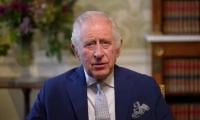KARACHI: The rupee strengthened on Friday after the International Monetary Fund (IMF) approved the release of a $700 million tranche of its $3 billion loan program, a move that could unlock further external financing, boost foreign exchange reserves and support the currency.
The rupee rose 0.27 percent to 280.36 against the dollar in the interbank market, according to the data from the State Bank of Pakistan. The rupee advanced in the open market as well, trading at 281.50 per dollar for selling, up from 281.94 in the previous session, the Exchange Companies Association of Pakistan reported.
The IMF executive board completed the first review of Pakistan’s economic reform programme supported by its stand-by arrangement (SBA) and approved the loan on Thursday. This is a positive sign for the country’s struggling economy ahead of the elections next month. Analysts believe that this decision by the IMF board would provide other lenders and markets some confidence during a period of uncertainty surrounding Pakistan's impending elections.
It is quite probable that Pakistan will receive a second tranche of $700 million from the IMF over the next couple of days. This will bring Pakistan's overall IMF disbursement under the SBA to $1.9 billion while bolstering the nation's forex reserves.
Pakistan got $1.2 billion from the IMF as the first tranche in July. The IMF team, led by Nathan Porter, visited Pakistan in November to hold discussions on the first review under SBA. It reviewed Pakistan's progress toward meeting specific goals set under the loan programme agreed upon in July and reached a staff-level agreement with Islamabad.
The forex reserves held by the SBP stood at $8.15 billion (enough for around two months of imports) as of January 5. The IMF’s payout will increase the reserves to roughly $9 billion, helping the nation service external debt, make interest payments, and assist in financing its current account.
“We believe that after IMF board approval, more dollar funding for Pakistan is likely from bilateral, multilateral, and other sources. This will also facilitate rollovers [from friendly countries] and bring stability to the currency,” said Topline Securities in a note.
In its statement, the IMF said that economic activity has stabilised, though the outlook remains challenging and contingent on the implementation of sound policies. Pakistan needs a market-determined exchange rate to buffer external shocks, continue rebuilding foreign reserves, and support competitiveness and growth, according to the IMF.
“The IMF now expects gross reserves to be $9.1 billion by June 2024, up from the earlier estimate of $8.9 billion. We anticipate reserves to be $8-10 billion by June 2024,” said the Topline.
“The IMF has also revised down its current account deficit (CAD) forecast to 1.6 percent of GDP ($5.7 billion) from earlier projection of 1.8 percent of GDP ($6.4 billion) for FY24. We estimate CAD to clock in at 1.1 percent of GDP ($4 billion) in FY24,” it added.
A manageable current account deficit brought on by lower imports and foreign currency inflows from multilateral lenders has kept the rupee steady over the past few months. The caretaker administration and central bank clamped down on illicit dollar trade, currency hoarding, and illegal money transfers in response to the sharp fall of the rupee in September.
The rupee recovered from its losses after the government implemented strict requirements and benchmarks set by the IMF, which led to historic reforms for the exchange businesses sector by the SBP. As a result, these measures assisted in containing the currency crisis, and the rupee appreciated against the dollar from 310 to 280.
The rupee has increased by 2 percent so far this fiscal year. According to analysts, the rupee would continue to be weak this year due to economic issues, mostly hefty debt repayments, a lack of external funding, and declining foreign exchange reserves. They expect the currency will fall to 310 against the dollar by June 2024 in the interbank market. This also sees the rupee dropping to 325 by the end of next year.















